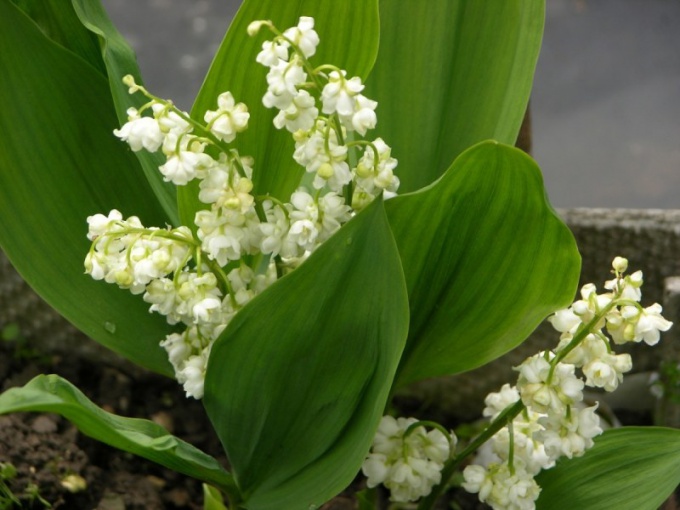Features of Lily of the valley
There are many decorative varieties grandiflorum Lily of the valley, which differ in the form of buds color of leaves, presence of vertical stripes on the plant. Regardless of the sort, all lilies are attributed miraculous properties: it is believed that this plant drives away from the house of the evil people, so many strive to have it in your garden.
Despite their innocent and delicate appearance, this plant is very poisonous in medicine and used to make extracts that are used to treat diseases of the heart, so in the garden you need to contact Lily of the valley very carefully, not to tear with my bare hands, and to work with them, wear rubber gloves. And ripped off the plants, too, show their nature: it is impossible to put the Lily one vase with other flowers, they are from this neighborhood are dying. The only exception to this is forget-me-not, Lily of the valley which is not harmful.
After flowering Lily of the valley on the branches appear red berries, which are the same as all the other parts of the plant are poisonous, so you need to be very careful not to allow children to take them in your mouth, it is very dangerous!
Plant care
If the grower will certainly want to see these flowers on your site, you need to prepare the soil: Lily of the valley prefers forest, loamy soil, moderately soiled, mildly acidic, the area should be with a light shading. Important condition – high humidity. To lilies of the valley grow well and bloomed profusely, you need to regularly water the garden, including phosphate and potash fertilizers.
However, even with good care, the lilies begin to bloom only in the third year of life, inherent nature. Flower buds differ from the leaf thicker and less acute apex. Reproduce Lily of the valley creeping rhizomes, what you also need to remember and to limit its spread, otherwise this cute aggressor will displace other crops. In planting lilies is usually not weeds, too aggressive they behave toward neighbors. To avoid thickening of the landings, they need to regularly thin out and to limit the spread of plants, otherwise flowering will stop or decrease its decorative effect.
When planting the rhizome of Lily of the valley should be filled with soil to a depth of 1.5-3 cm, not sagusa to prevent getting infected with Botrytis. After planting and rooting (in a month) lilies need to be fed with organic fertilizers (mullein solution 1:10 with addition of 100 g wood ash). Mineral fertilizers can feed landing next year. With good and proper care of delicate bells of lilies of the valley for many years will delight garden visitors and its owners.
